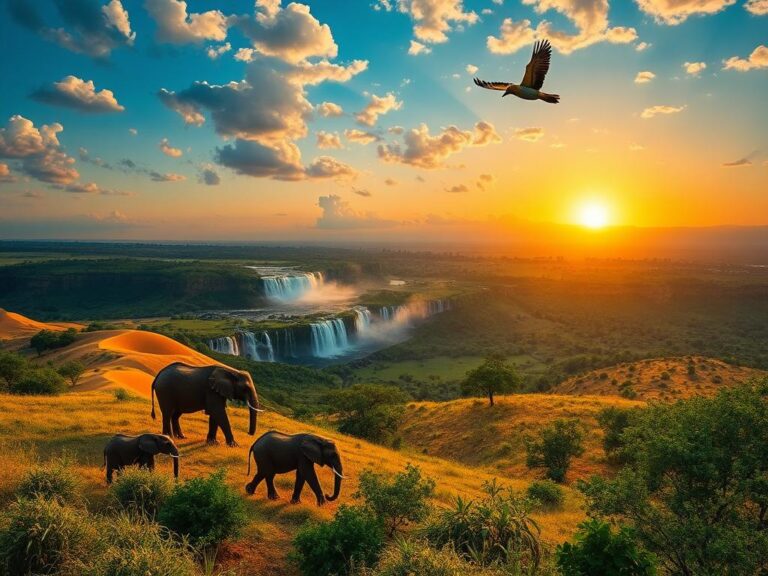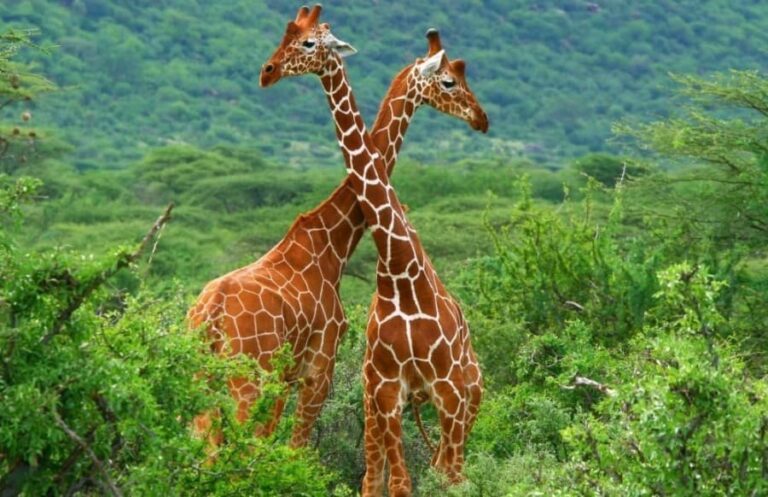
Unveiling the Best Time of Year for an African Safari
Best time of year for an African safari is a question many travel enthusiasts are eager to answer.
There’s a mystical allure surrounding the idea of embarking on a safari adventure, especially in Africa, a continent teeming with breathtaking landscapes and wildlife galore.
However, selecting the most perfect time to witness the exhilarating sights is crucial. Discover the various seasons, weather patterns, and wildlife behaviors that can enhance your safari experience.
In this article, we will delve into the intricacies of timing your African safari adventure for the most thrilling wildlife encounters and stunning scenery.
Understanding the Seasons in Africa
Africa is vast, and with its magnitude comes diverse climates and seasons.
Understanding these seasonal changes is essential for planning the ideal safari, as every season caters to different wildlife activity and travel experiences.
The continent experiences two main seasons: the dry season and the wet season.
The dry season, from June to October, is heralded by many as the best time for wildlife viewing.
During these months, water sources dwindle, causing animals to gather around remaining waterholes, making for easier sightings.
Contrastingly, the wet season, which runs from November to May, breathes life into the landscape with vibrant flora and the arrival of numerous migratory birds.
This season is also significant for wildlife calving and offers a somewhat different yet equally mesmerizing safari experience.
Why the Dry Season is a Wildlife Spectacle
The dry season is arguably the peak time for an African safari.
During this period, animal sightings become more frequent as they congregate around dwindling water sources.
Savvy wildlife enthusiasts know that the dry season facilitates incredible glimpses into the natural world.
“The dry months allow you to see animals congregating around waterholes, creating both thrilling and unforgettable moments.”
Temperatures remain warm, especially in regions like East Africa and Southern Africa, but the absence of rain allows for easier navigation and comfortable game drives.
Thus, the dry months are ideal for spotting iconic species like elephants, lions, and cheetahs in their natural habitat, often during the cooler times of early morning or late afternoon.
Experiencing the Magic of the Wet Season
Some safari-goers might shy away from the wet season due to fears of rain ruining their adventure.
However, this season reveals a different yet equally enchanting side of Africa.
The rain transforms the arid landscapes into lush green paradise, providing an idyllic backdrop for incredible wildlife sightings.
This is an excellent time for birdwatching, with thousands of migratory birds arriving, boasting vibrant plumage that stands out against the greenery.
Moreover, the wet season welcomes countless newborn animals, as many species choose this period to give birth.
Witnessing the miracle of life in the wild offers an emotional and unforgettable experience for those lucky enough to be in the right place at the right time.
Exploring the Great Migration
One of nature’s most spectacular events is the Great Migration, occurring primarily from July to September.
This epic journey sees millions of wildebeest and zebras traversing the Serengeti in Tanzania and the Masai Mara in Kenya, following the rains in search of green pastures.
The Great Migration is an iconic experience that attracts travelers from around the world.
Engaging in the thrill of this ongoing wildlife spectacle can create memories for a lifetime.
“To witness the Great Migration is to witness one of nature’s most awe-inspiring phenomena – it’s an experience like no other.”
This phenomenon showcases the raw struggles for survival, as predators lurk nearby, preying upon the vulnerable herds.
While the migration period is a spectacle in itself, late summer also affords excellent opportunities for river crossings when the animals must navigate treacherous waters.
Calving Season: Nature’s Renewal
While the Great Migration is breathtaking, equally mesmerizing is the calving season between January and March.
During this time, approximately 500,000 wildebeest calves are born in the Serengeti.
Witnessing such vulnerability among newborns attracts predators like lions, cheetahs, and hyenas hunting for their next meal.
This abundance of new life creates an invigorating sense of energy in the air, making the period remarkable for wildlife enthusiasts.
Additionally, photographers find this time valuable as the dramatic interplay between infants and predators unfolds, creating striking imagery.
Climate and Temperature Variations
Africa encompasses a multitude of climates; therefore, the best time for a safari may vary by region.
For instance, if you intend to visit Southern Africa, the dry season is more favorable, while in East Africa, both dry and wet seasons offer unique experiences.
It’s pertinent to investigate not only the overall climate but also the specific temperatures to ensure comfortable safari days.
Regions such as Botswana might be hot during the day, but nights can get quite chilly.
Packing layers is always a sound strategy when setting off on an expedition!
Crowd Levels: Finding Your Zen
The peak tourist season, spanning from June to September, usually translates into busier parks and high accommodation rates.
To enjoy a more tranquil experience, consider planning your safari during the shoulder seasons, which encompass the months of April to May and October to November.
These months often provide less crowded conditions while still presenting ample opportunities for wildlife viewing.
Finding a balance between weather, wildlife activity, and crowd levels is essential for planning a fulfilling safari adventure.
Spotting Specific Wildlife
If you’re eager to catch sight of specific animals, planning your safari around their peak activity periods is vital.
For instance, the famous Big Five (lion, leopard, elephant, buffalo, and rhinoceros) tend to be easier to spot during the dry season.
However, if you are particularly thrilled by birds, the wet season thrives with migratory species.
Research months that boast the best chances of sighting your desired wildlife to maximize your safari experience.
Photography: The Perfect Light for Capturing Moments
Consider the lighting when planning your safari photography sessions.
Many safari-goers prefer to venture out during the early morning or late afternoon for optimal lighting conditions.
These hours, commonly referred to as the golden hours, produce stunning natural light perfect for capturing iconic moments.
A well-timed photograph can immortalize your experiences in the African wilderness, capturing not just the scenery but the emotions that come with it.
Embracing Local Culture and Events
To enhance your safari experience even further, think about planning your trip to coincide with local cultural events or tribal festivals.
Experiencing local cultures adds depth and richness to your safari adventure.
Participating in cultural ceremonies or exploring local crafts offers insight into the customs and traditions of the communities inhabiting the region.
This connection creates an enriching experience beyond just wildlife observation, providing a more holistic understanding of Africa.
Budgeting for Your Safari Adventure
Budgeting is an essential factor when planning your safari.
Traveling during the low season can lead to substantial savings on both accommodation and safari excursions.
However, be mindful of the trade-off regarding wildlife visibility and accessibility, especially in the wet season, when some parks may be less accessible.
Determine what aspects matter most to you and plan accordingly to ensure your adventure remains within budget while maximizing your experience.
Conclusion
Determining the best time of year for an African safari depends on your preferences and priorities.
Whether you are intrigued by the dry season’s abundance of wildlife encounters, the captivating beauty of the wet season, or iconic events like the Great Migration, there is never a wrong time to experience the rejuvenating spirit of Africa.
By understanding the nuances of seasons, local events, wildlife activity, and climate variations, you can craft a personalized safari experience that aligns with your passions.
Remember that the magic of Africa awaits, and each visit offers a journey of discovery unlike any other.
FAQ
What is the best time to see the Big Five?
The dry season are typically the best months for spotting the Big Five. During these months, animals congregate around waterholes, making them easier to find.
Are safaris safe during the wet season?
Yes, safaris can still be safe during the wet season. However, some areas may experience heavy rain that can affect access. It’s essential to choose a reliable safari operator during those months.
How does wildlife viewing differ between the dry and wet seasons?
During the dry season, animals gather around available water sources, leading to easier sightings. In contrast, the wet season provides abundant food and newborn wildlife, creating a different viewing experience.
Can I combine my safari with other activities?
Absolutely! Many safari destinations also offer additional activities such as cultural excursions, hiking, and hot air balloon rides for a well-rounded adventure.
What should I pack for my safari?
Pack lightweight clothing, comfortable shoes, a hat, sunscreen, binoculars, and a camera. Layers are recommended as temperatures can vary significantly between day and night.
Are you ready for your unforgettable safari? Share your thoughts, experiences, or questions in the comments below!


